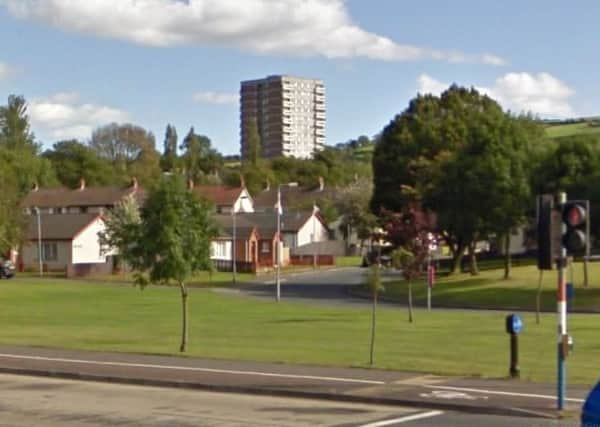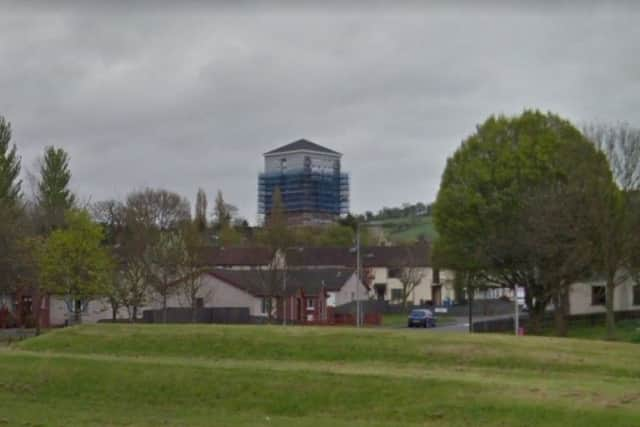Tower block fire safety issue '˜may not be fixed until end of year'


The Housing Executive has also told the News Letter it does not have an estimate for how much the work at the three massive Belfast complexes will cost, after it emerged the new roofs for the buildings were built on top of existing smoke vents which were meant to discharge into open air.
It has further emerged firefighters had concerns about dry risers – a key feature built into the fabric of high-rise buildings – right across the dozens of towerblocks owned by the Housing Executive.
Advertisement
Hide AdAdvertisement
Hide AdIt comes after a safety inspection report was published on Tuesday covering all of Northern Ireland’s 33 Housing Executive-owned tower blocks (defined as buildings which are 59ft or higher).


The report had been commissioned after the tragedy at Grenfell Tower last year.
Out of the 33 properties, three towerblocks containing roughly 50 flats each – Eithne and Cuchulainn in the republican-dominated New Lodge area of north Belfast, and Whincroft House in the loyalist-dominated Braniel estate in east Belfast – recently had new sloping roofs added to their old flat tops at a cost of £210,000 each.
However the report said this means that, if there is a major blaze, smoke will now vent into “an enclosed roof”. The Housing Executive is trying to fix this.
Advertisement
Hide AdAdvertisement
Hide AdIt told the News Letter on Tuesday: “The costings have not yet been finalised as we are currently finalising the design solutions and when those works look set to complete.


“The design solution is being finalised and we are engaging with contractors. We expect completion by the end of the year.
“We will be informing all of our tenants who will be affected by this work and they will also be appraised of timescales involved for the work.”
It also said the tower blocks “were constructed before any NI Building Regulations existed”, and that it was normal to find “non-compliances” during a safety review.
Advertisement
Hide AdAdvertisement
Hide AdFire brigade group commander Geoff Somerville (a member of the Independent Reference Group which compiled the report) told the News Letter: “The advantage if there’s no roof on the building is the air pressure on the top of the building will automatically pull smoke out of the smoke shaft or firefighting stair.”


However, if it is covered with a roof, “effectively that pull on the smoke won’t happen and the air will stagnate”.
He said: “The smoke extraction systems need to be re-instated, and it’s one of the priorities emphasised by the fire-and-rescue service during this independent towerblocks reference group.”
Closing in the vents in the first place had been “a very significant oversight”.
Advertisement
Hide AdAdvertisement
Hide AdIn addition, he said “the most important thing” which firefighters wanted to be sorted out had been issues with dry risers – essentially shafts which firefighters can pump water into and then access via any floor of the building.


There was an issue with every single one of the dry risers in the 33 properties found.
Commander Somerville said they “did not have full assurance they had been tested in accordance with the British standard”.
The fire brigade also served enforcement notices for two risers which needed repairs, one of which could not be operated. These problems have now been addressed he said.
Advertisement
Hide AdAdvertisement
Hide AdWhen it comes to the cladding used on the four Housing Executive towerblocks (which is different to the kind used on Grenfell), the report found that after “robust and stringent checks” including a “full scale fire test” – which were done “without having a statutory obligation to do so” – the “cladding systems installed on the four Housing Executive tower blocks meet current Building Regulation standards, but due to the compromised smoke ventilation/extraction it will not be fully compliant until all remediation measures have been completed”.
It adds that they should be “assessed against any new regulatory standards” which emerge.
As to what the future holds more generally for the towerblocks, is proposed that some of the 33 Housing Executive high-rises be demolished.
Consultation on this is expected to take place early this year.